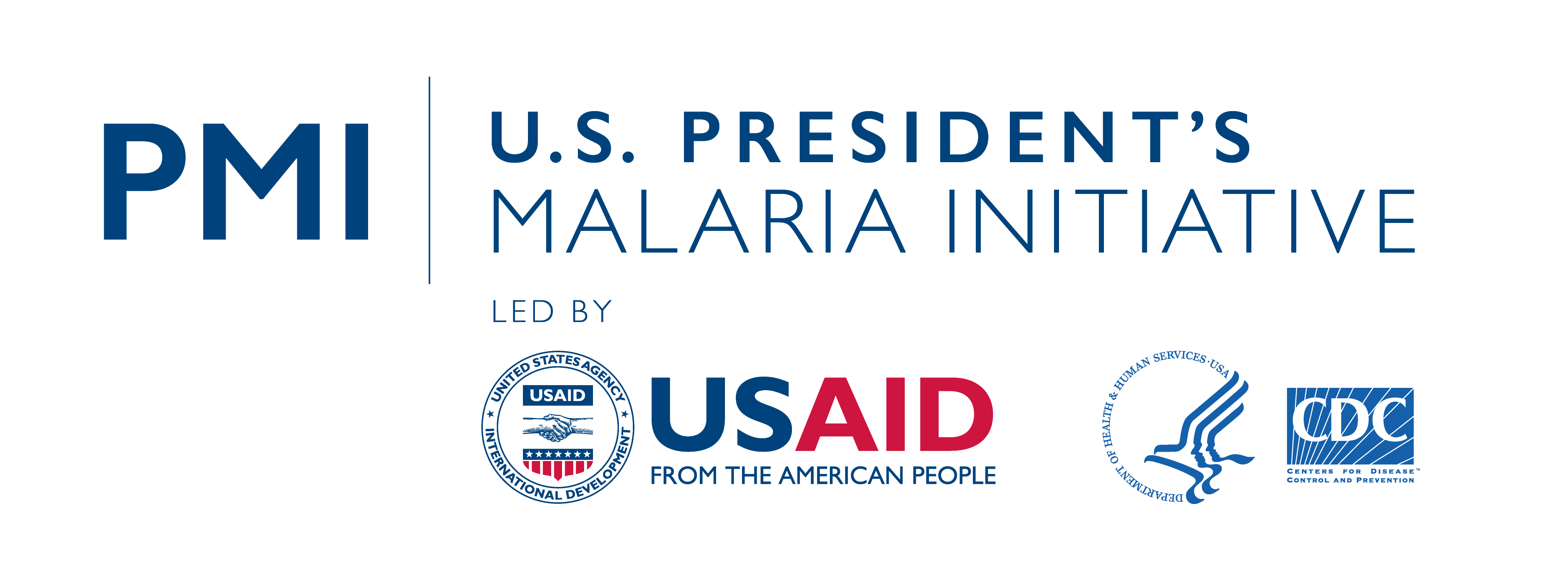Malaria is a leading public health challenge in Côte d’Ivoire. It accounts for about 43% of outpatient visits in health facilities. Malaria incidence in 2017 was 134 cases per 1,000 in the general population, and 247 per 1,000 among children under 5 (per the NMCP 2018 annual report).
The main malaria vector control method currently used in Côte d’Ivoire is the distribution and use of ITNs. ITN distribution is typically carried out through mass campaigns for universal coverage, and through routine distribution during antenatal visits and immunization of children under 1 year. The country’s 2016–2020 National Malaria Strategic Plan has selected IRS as an additional vector control method to reduce morbidity and mortality from malaria.
Since 2015, the NMCP has worked with four research institutes to conduct entomological monitoring including insecticide resistance monitoring and biannual vector surveillance (one collection in the dry and one in the rainy) in twelve sentinel sites selected across the country. These activities were implemented every two years in each of twelve sentinel sites (six sites one year and the other six the next year) from 2015-2017 with financial support from the Global Fund. PMI began supporting entomological monitoring in Cote d’Ivoire in 2018, enabling insecticide resistance monitoring in ten sites selected by the NMCP, four of which were also selected for monthly vector surveillance. In 2019, NMCP resumed biannual vector surveillance in all 12 sentinel sites with Global Fund support, PMI continued supporting monthly vector surveillance in another four sites (two selected for IRS and two control sites) through the VectorLink project, and insecticide resistance testing was conducted in 19 sites combined. Over the same period of time, several parallel entomological monitoring activities were conducted through the different research institute projects, including a three-year community evaluation of eave tubes funded by the Bill and Melinda Gates Foundation.
In year three (2020), VectorLink Côte d’Ivoire implemented the first-ever large-scale IRS campaign in the country in two districts (Nassian and Sakassou, shown in Figure 1) selected by the NMCP, PMI, and the National Vector Control Steering Committee (VCSC), based on entomological and epidemiological data collected in 2018 and 2019 as well as a rapid feasibility study. The project targeted a total of 56,601 structures (based on results of a structure enumeration effort in 2019) protecting approximately 200,168 people, including 3,193 pregnant women and 28,523 children under 5 years. The project sprayed 53,962 structures out of the 56,601 targeted structures, resulting in 95.3% spray progress, and out of the 58,695 eligible structures found, resulting in 91.9% spray coverage. In 2021, the NMCP, PMI, and the National VCSC recommended repeating IRS in the same districts as in 2020 using the same insecticides in each district: Fludora Fusion in Sakassou and SumiShield 50WG in Nassian.
In year four (2021), the NMCP, PMI, and the National VCSC recommended repeating IRS in the same districts as in 2020 using the same insecticides in each district: Fludora Fusion in Sakassou and SumiShield 50WG in Nassian. In 2021, the IRS campaign was conducted in both districts over 30 operational days between August 2 and September 4. Using lessons learned from the 2020 campaign, VectorLink Côte d’Ivoire adapted the communications strategy, which reduced refusal cases by a significant 53%, from 1,520 in 2020 to 713 in 2021 At the end of the 2021 IRS campaign, the project had sprayed 60,496 structures (out of the 62,551 eligible structures found), corresponding to 96.7% coverage.
In year five (January 2022 – December 2022), the PMI VectorLink Côte d’Ivoire Project will work with the Ministry of Health, NMCP, and VCSC to spray an estimated 62,551 targeted structures in two health districts using SumiShield 50WG and Fludora Fusion. The project’s primary objective is to reach a minimum coverage of 85% of the structures found in each health district by implementing high-quality IRS operations.
In addition, the project will carry out the following key activities:
- Conduct training with a focus on IRS supervision and spray techniques to improve the overall quality of spraying.
- Conduct regular monitoring and evaluation (M&E) of project activities to ensure alignment with set targets and objectives.
- Carry out all procurement, shipping, delivery, and storage of IRS commodities.
- Maintain a robust IRS logistics and warehousing system through training and supervision.
- Work with the NMCP communication unit service to coordinate the information, education and communication (IEC), sensitization, and mobilization activities to raise awareness and encourage acceptance of IRS.
- Work with the NMCP and the Ministry of Environment to ensure environmental compliance through environmental compliance inspections before, during, and after spraying.
- Mainstream gender equality and female empowerment by ensuring women’s participation in different project activities including employment of seasonal workers.
- Promote cost efficiency through due diligence and efficiency of operations.
- Evaluate the impact of the delayed 2020 and 2021 IRS campaign on malaria case incidence.
- Support NMCP organizing a workshop on global Vector Control strategies in the future
- Conduct insecticide susceptibility tests (based on insecticides list in section 7.4) in 18 selected sites nationwide including the four bionomics sites and measure the resistance intensity, as required, for the main malaria vector, gambiae s.l.
- Monitor the density, species composition, behavior, and Plasmodium sporozoite infection rates of malaria vectors in the four sites (two IRS health districts and two controls).
- Monitor the residual life of the sprayed insecticides using cone bioassays in IRS health districts.
- Conduct the 12-month round of durability monitoring for PBO and IG2 ITNs distributed in the 2021 mass campaign.
- Coordinate with the NMCP to develop ITN guidelines for continuous distribution by leveraging findings from the PMI VectorLink 2021 ITN continuous distribution assessment.

